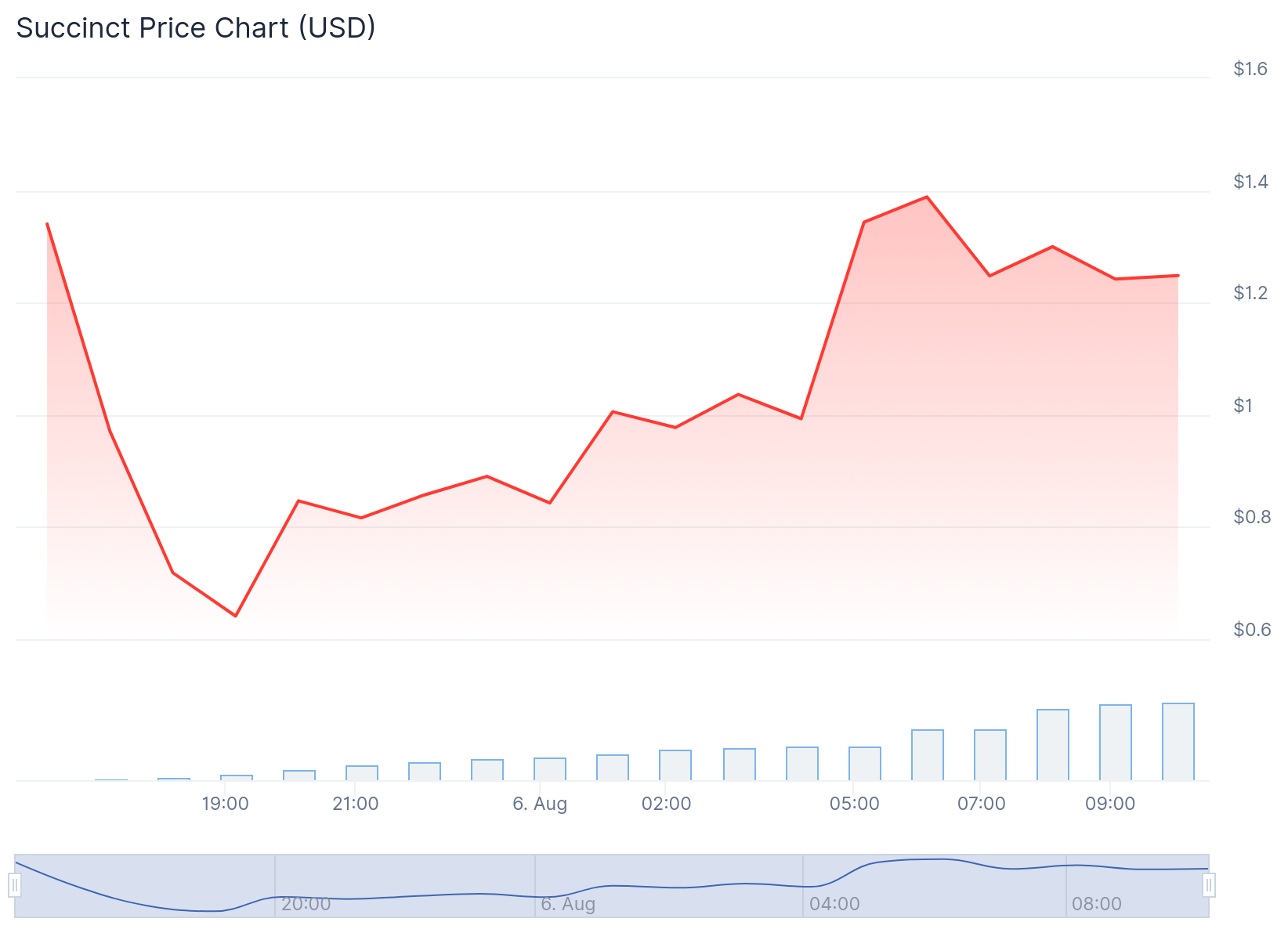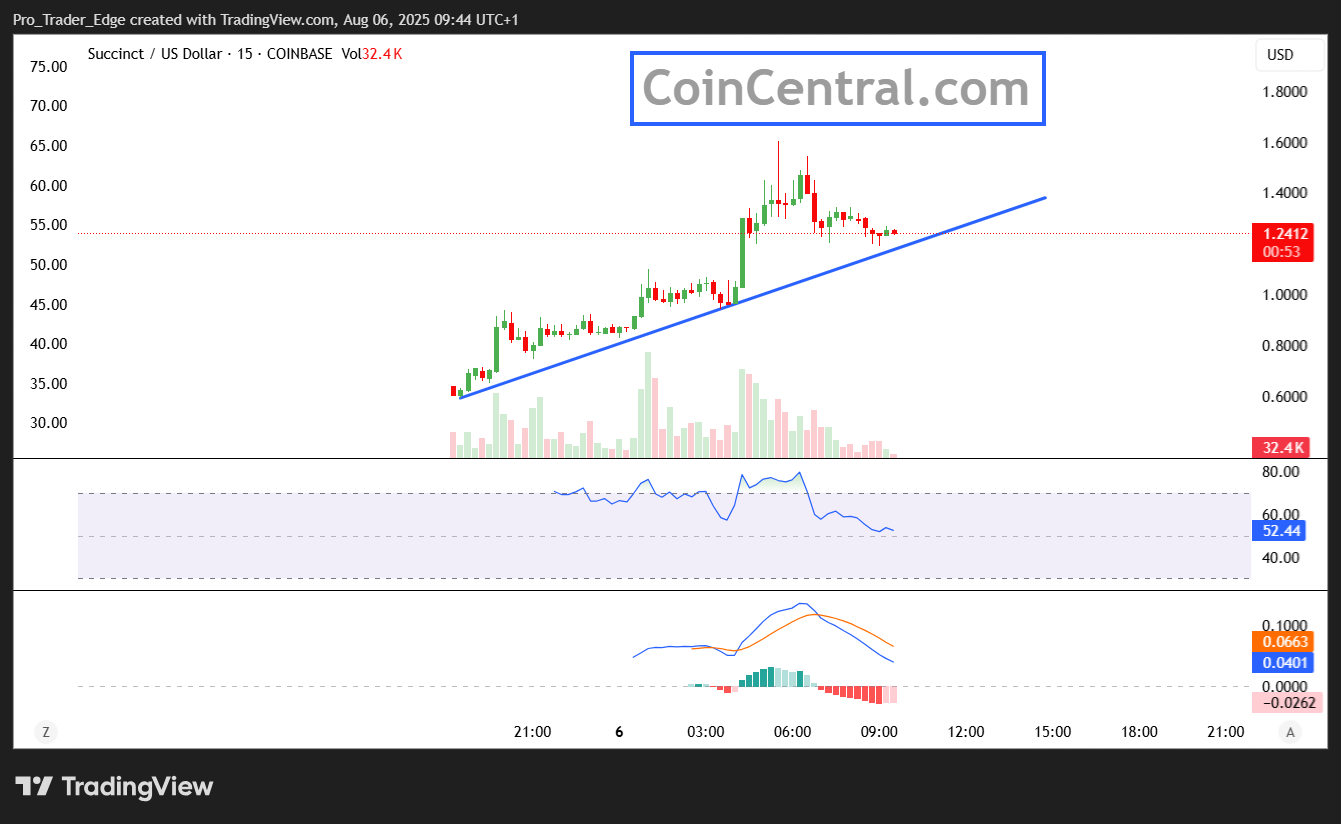TLDR
- Succinct launched its mainnet on August 5, 2025, introducing a decentralized network for zero-knowledge proof generation
- The PROVE token was distributed via airdrop and reached $1.50 following exchange listings on Binance and Upbit
- The network already supports over 35 protocols and has processed more than 5 million proofs for major projects
- Some testnet participants expressed frustration over being excluded from the airdrop distribution
- Technical analysis suggests potential upside to $1.56 if current price patterns continue
Succinct officially launched its mainnet on August 5, 2025, introducing the world’s first decentralized prover network for zero-knowledge proofs. The launch activated the PROVE token, which serves as the economic foundation for the network’s operations.

The PROVE token reached $1.50 following its distribution through an airdrop and subsequent listings on major exchanges including Binance and Upbit. The token provides compensation for network participants who generate zero-knowledge proofs and acts as a security mechanism through staking requirements.
Succinct’s network operates as a two-sided marketplace on Ethereum where applications can submit proof requests and independent provers compete to fulfill them. This system eliminates the need for developers to build custom infrastructure for zero-knowledge technology.
The platform already demonstrates strong adoption metrics. Over 35 leading protocols use the network, with more than 5 million proofs processed to date.
Major projects utilizing Succinct include Polygon, Mantle, Celestia, and Lido. The network has secured over $4 billion in value across these implementations.

Network Architecture and Operations
The decentralized approach differs from traditional centralized systems by distributing proof generation across multiple independent operators. Provers must stake PROVE tokens to participate, creating financial incentives for honest behavior.
Zero-knowledge proofs allow parties to verify data or transactions without revealing underlying information. This technology is already integral to privacy-focused cryptocurrencies and Ethereum Layer-2 solutions.
John Guibas, CTO of Succinct Labs, stated the transition from whitepaper to working mainnet took eight months. The rapid development timeline reflects focused engineering and cryptographic implementation.
Uma Roy, CEO of Succinct Labs, positioned the network to support applications requiring verifiable computation. The infrastructure aims to make zero-knowledge proofs accessible through simple API calls.
Market Response and Community Feedback
The airdrop generated mixed reactions within the community. Some recipients received six-figure payouts, while early buyers on exchanges saw gains following the Upbit listing.
However, testnet participants voiced frustration over exclusion from airdrop criteria. Many early contributors felt overlooked as badge holders and Binance Alpha users reportedly received larger token allocations.
The unclaimed airdrop portion was redirected to staking incentives rather than testnet users. This decision sparked additional criticism from those who participated in early development and testing phases.
Despite community tensions, PROVE maintained price stability following its launch. The token broke out from an ascending parallel channel pattern, indicating upward momentum.
Technical analysis shows PROVE formed a symmetrical triangle after the initial breakout. This pattern typically leads to trend continuation when following upward movement.
Current price action suggests potential movement to $1.56 if the triangle pattern breaks upward. A downward break could see the price retreat to $1.20 at the channel’s midline.
The network’s long-term success will depend on continued adoption and technical development. Ethereum’s increasing focus on zero-knowledge technology may drive demand for decentralized prover services.

Developers can access the Succinct Prover Network through documentation available at docs.succinct.xyz. The platform positions itself to support the next generation of verifiable computation applications as the ecosystem expands.






